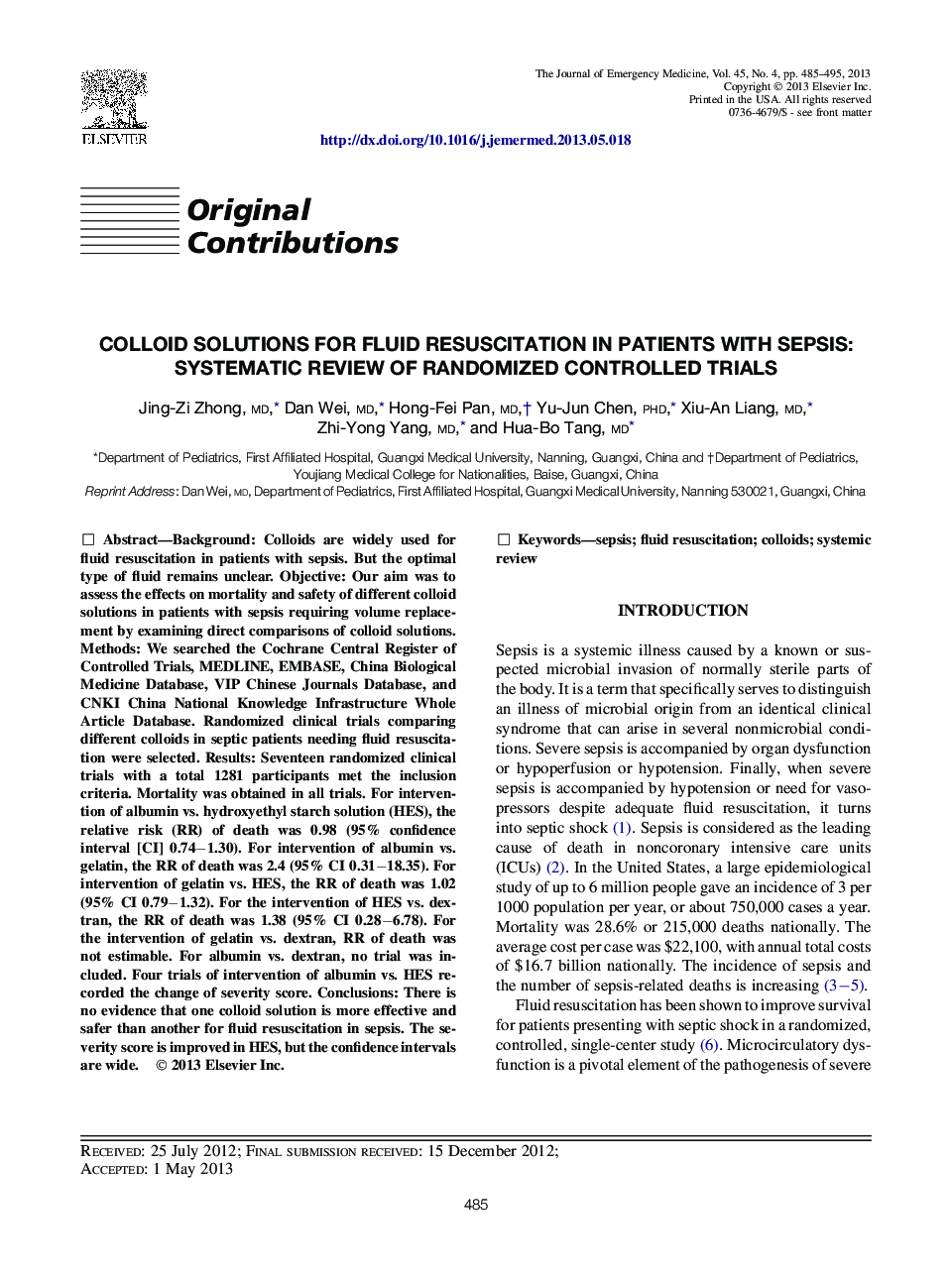| Article ID | Journal | Published Year | Pages | File Type |
|---|---|---|---|---|
| 3247781 | The Journal of Emergency Medicine | 2013 | 11 Pages |
BackgroundColloids are widely used for fluid resuscitation in patients with sepsis. But the optimal type of fluid remains unclear.ObjectiveOur aim was to assess the effects on mortality and safety of different colloid solutions in patients with sepsis requiring volume replacement by examining direct comparisons of colloid solutions.MethodsWe searched the Cochrane Central Register of Controlled Trials, MEDLINE, EMBASE, China Biological Medicine Database, VIP Chinese Journals Database, and CNKI China National Knowledge Infrastructure Whole Article Database. Randomized clinical trials comparing different colloids in septic patients needing fluid resuscitation were selected.ResultsSeventeen randomized clinical trials with a total 1281 participants met the inclusion criteria. Mortality was obtained in all trials. For intervention of albumin vs. hydroxyethyl starch solution (HES), the relative risk (RR) of death was 0.98 (95% confidence interval [CI] 0.74−1.30). For intervention of albumin vs. gelatin, the RR of death was 2.4 (95% CI 0.31−18.35). For intervention of gelatin vs. HES, the RR of death was 1.02 (95% CI 0.79−1.32). For the intervention of HES vs. dextran, the RR of death was 1.38 (95% CI 0.28−6.78). For the intervention of gelatin vs. dextran, RR of death was not estimable. For albumin vs. dextran, no trial was included. Four trials of intervention of albumin vs. HES recorded the change of severity score.ConclusionsThere is no evidence that one colloid solution is more effective and safer than another for fluid resuscitation in sepsis. The severity score is improved in HES, but the confidence intervals are wide.
